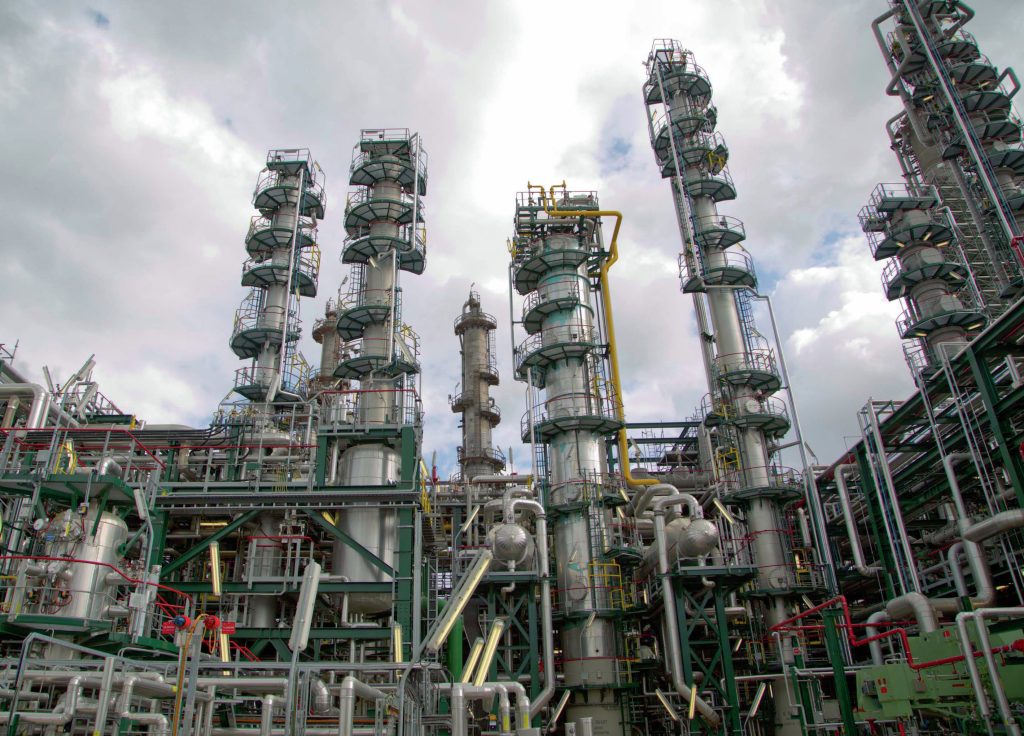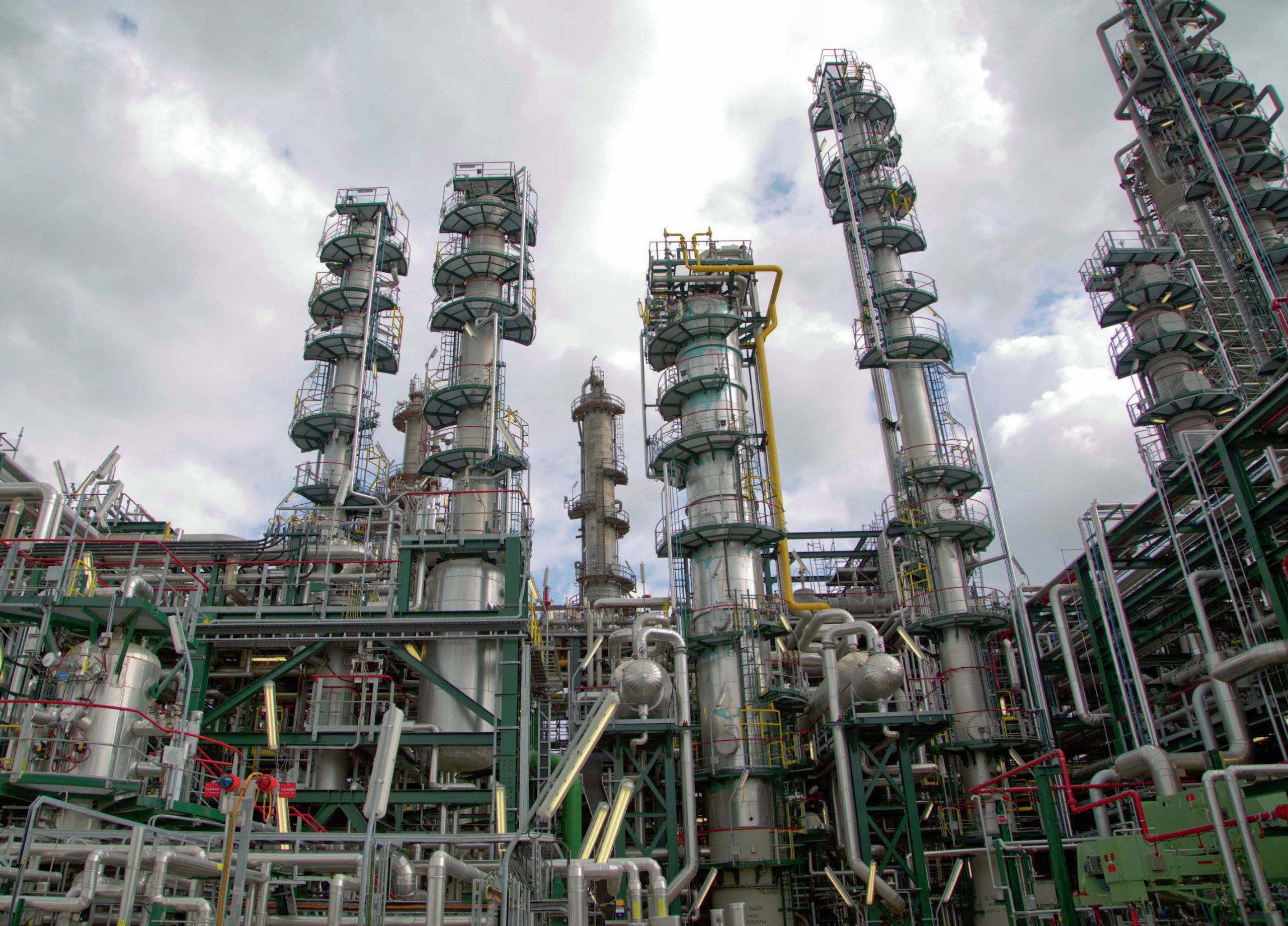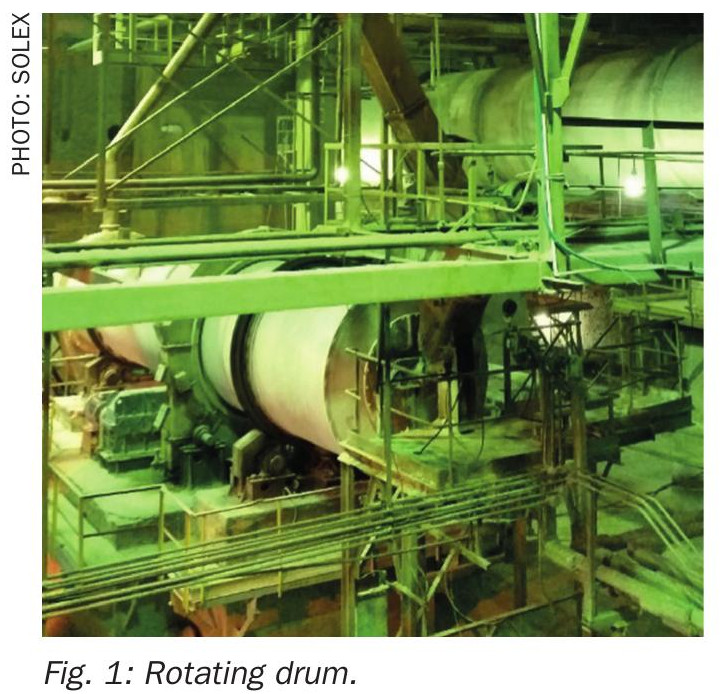Sulphur 386 Jan-Feb 2020

31 January 2020
The challenges facing refiners
REFINING
The challenges facing refiners
The refining industry, the source of half of the world’s elemental sulphur, continues to face major structural changes from changing feedstock and product slates and increasing regulatory burdens.

The refining industry has in general benefitted from the lower oil price environment over the past few years. Because it derives its profit from the so-called crack spread – the difference between the price of crude oil and the price of refined end products – the downstream sector can withstand crude oil price volatility much easier than the upstream industry. Indeed, the collapse in crude oil prices from late 2014 caused by the slowdown of the Chinese economy has helped the refining industry. As oil companies found upstream projects facing uncertain financial returns, they were forced to concentrate more on their downstream sector. The fall in oil prices to as low as $26/bbl in 2016 also led to a corresponding decline in absolute price levels of end products, which helped boost demand for, eg, road fuels – US gasoline demand rose by 9% for the first half of 2015. All of this contrasts with the poor conditions for the refining industry from 2008-2014, when Europe, for example, saw 2.1 million bbl/d of refinery closures. Even so, the refinery sector continues to face a variety of challenges over the coming years and decades.
IMO regulations
Undoubtedly the greatest immediate challenge for the refining industry has come with the requirement to meet the change in demand for refined products prompted by the International Marine Organization’s 0.5% cap on sulphur in bunker fuels, which came into effect on January 1st 2020. As we discussed in our previous issue (‘Countdown to MARPOL’, Sulphur 385, Nov/Dec 2019, pp18-20), as there has been only a relatively modest take-up of exhaust scrubbing systems so far among shipowners, the most pronounced effect for refiners will be a large reduction in demand for high sulphur fuel oil (HSFO) and a corresponding increase in demand for middle distillate – marine gasoil (MGO) and diesel and very low sulphur fuel oils (VLSFO). The best estimates point to the decline in HSFO requirements and increase in MGO/VLSFO demand being around 2.7 million bbl/d in both cases, with a slow rebound for HSFO demand as more scrubbing systems are installed over the coming years.
This is one of the biggest changes that refiners have had to face in many years, and puts a premium on refineries with residue cracking and desulphurisation units. Indeed, the IMO regulations are expected to bring a temporary benefit for the more complex refiners of North America and Europe for the next couple of years. During times of changeovers in fuel specifications, markets often place a premium on higher grade products compared to their marginal cost of supply. However, as supply increases and begins to balance increased demand the premiums gradually disappear. Refining industry analysts are indicating that the pricing effects of the IMO changeover could begin to disappear by the end of 2022. At that time, slowing demand growth and the impact of new capacities and more fuel-efficient vehicles and a switch towards electrical and other alternative power trains will start to make the business environment more difficult again.
Changing crude and product slates
The switch from HSFO to MGO/VLSFO is, however, only one of the challenges facing refiners in terms of changing crude and product slates. For many years, the switch towards diesel road vehicles, especially in Europe, and away from gasoline was an issue for European refiners, who were predominantly geared towards gasoline production, and who relied on selling their surplus gasoline production across the Atlantic to North America, buying in diesel from Russia and the CIS to make up for the shortfall. However, the pendulum has recently begun to swing against diesel road vehicles in Europe, with diesel engines blamed for emissions of nitrous oxides and particulate matter and consequent poor air quality in major European cities, and the aftereffects of the 2015 ‘dieselgate’ emissions scandal, when major car makers were found to have been fudging diesel emissions figures. Many European cities are now looking at bans on the use of diesel vehicles during the 2020s. European sales of diesel vehicles dropped by 20% in 2018, and 30% in the UK, and in 2019 diesel car sales dropped by another 30% across Europe, with corresponding increases in hybrid and electric vehicles. Set against this, globally the demand for diesel fuels continues to increase, and of course has especially been boosted by the new IMO regulations, but longer term there are product changes that the industry will need to come to terms with.
On the feedstock side, there has been a major boost in light sweet crude production in the US, as fracking for tight oil has completely transformed the US oil industry. US shale oil production has risen from virtually nothing in 2010 to almost 7 million bbl/d by the end of the decade. This has been fortunate for US refiners – global oil demand is in general increasingly shifting towards lighter and sweeter products as a result of rising demand for petrochemicals and the need to meet tightening sulphur specifications. Meanwhile, US refiners’ access to heavy sour crudes have been restricted by sanctions on Venezuela and Iran and constraints on Canada’s rail and pipeline capacity to export oil sands bitumen. This has been problematic for US Gulf Coast refiners who had geared up to work with heavier, sourer crudes, expecting them to be much cheaper than they have in fact become, when in fact they have been trading at rough parity to conventional crudes.
The IEA’s most recent long term energy outlook projects that the US will continue to lead oil supply growth over the next six years, thanks to the incredible strength of its shale industry, triggering a continuing transformation of global oil markets. US tight oil production is forecast to rise between 3-5 million bbl/d in the period to 2024, depending on oil prices (high oil prices will encourage more production), by which time the US will be exporting more oil than Russia and closing in on Saudi Arabia. Overtaking Arabia as the world’s largest oil exporter will be a pivotal milestone that will signify greater diversity of supply in world markets, bringing down the average API gravity – and sulphur content – of the world oil supply considerably. Shale crudes contain an average 0.3% sulphur by weight, compared to the current global average of 1.2%.
Longer term challenges
Looking to the longer term, three major challenges face the refining industry – one on the supply side, one on the demand side, and the third from regulation. On the supply side, one of the major trends in the industry over the past two decades is one that seems sure to continue, and that is the gradual long-term shift towards the Middle East and Asia of global refining capacity. According to the IEA, between 2018 and 2040, around 15 million bbl/d of new refining capacity will be completed in the Middle East and Asia, about 3.5 million bbl/d of that in China, and a similar amount in the Middle East, taking those regions’ combined share of what will be a 110 million bbl/d industry by then from 37% today to 48% in 2040. At the same time, refining capacity in Europe is projected to fall, from 16.2 million bbl/d to 14.5 million bbl/d, with another 5.3 million bbl/d predicted to be “at risk”. For refiners in Europe, and owners of smaller, older capacity around the globe, remaining competitive with large new refiners in Asia will be one of their greatest long-term challenges. Likewise, attempts by US refiners to sell gasoline into Asian markets may founder on refining capacity additions in those markets.
Demand – peak oil?
Prior to the boom in oil production from fracking, one of the major concerns for the industry were projections of new supply sources being unable to keep up with falling production from existing fields – this led to the projected phenomenon of so-called ‘peak oil’ production. The US tight oil boom has ended such gloomy predictions, and no-one talks of peak oil supply any more. Instead, the looming crunch for the industry now appears to be peak oil demand. Various companies and industry bodies project that global demand for oil-based products will peak some time in the late 2020s-early 2040s.
The drivers for this are increasing efficiency of road vehicle engines, ageing populations (who tend to drive less) and more particularly the increasing uptake of alternative fuel vehicles. Some inroads into liquids consumption has come from biofuels such as sugar or corn starch derived ethanol (in Brazil and the US respectively), coal-based methanol production (in China), natural gas vehicles, hybrid electric vehicles, and now increasingly from electric vehicles. Electric vehicle sales are estimated to have reached just under 3 million units per year worldwide in 2019. Europe and the United States are major consumers, but demand growth is rising fastest in China, which is seeking to ease the country’s dependence on foreign oil imports. More than half of all electric vehicle sales are now in China. On the power generation side, meanwhile, oil-based power production is falling, and switching to natural gas or renewables.
As to when peak oil demand will be reached, the IEA puts the dating of the plateau in consumption at 2040, by which time consumption will be 104.8 million bbl/d. However, the organisation also projects essentially zero growth during the 2030s, pointing to a long peak plateau for demand from 2030-2040, with demand in 2030 up only 9.8% on 2018; an average annual growth rate of only 0.8% to 2030. Furthermore, the IEA says that 90% of this growth will come from petrochemical feedstocks such as ethane, LPG and naphtha and jet fuel. This contrasts greatly with the trend since 2000, when gasoline and diesel provided two-thirds of the growth in oil products. Gasoline demand will probably peak sometime in the late 2020s, according to the IEA forecast.
Regulations
While the IMO’s switch to lower sulphur bunker fuels has been the biggest systemic shock to the global refining industry over the past few years, tightening environmental regulations on a variety of other products and emissions also continue to challenge refiners.
While regulations on sulphur content of road vehicle fuels are down to 10-15 ppm sulphur in most major economies now, regulations in those regions not meeting these levels are continuing to tighten, including Africa, Latin America and the Middle East. As yet there is no sulphur standard on aviation fuel, though there have been discussions and studies on a reduction from the existing 400-800 ppm typical. There are also continuing extensions of what the IMO defines as “emissions control areas” (ECAs), where the limit on fuel sulphur is 0.1%. Refiners also face pressure to lower SO2 emissions and, increasingly, emissions of carbon dioxide, something which can be mutually exclusive in terms of refinery operations.
Digitalisation
Finally, especially for older refineries, capturing the benefits of digitalisation of operations could be a significant factor in future success, via improved margins from real-time optimisation systems that integrate process control and production planning; using predictive maintenance to make plants more reliable, with lower levels of downtime; and making processes and support functions across the refinery more efficient. However, experience suggests that it is not always an easy process for refiners to manage, and can be scrappy and piecemeal, with poor implementation unless these efforts are well coordinated.
“This is increasingly leading to a trend towards greater integration between refining and petrochemical production.”
Petrochemicals
Although demand for refined products is approaching a peak, demand for chemicals and petrochemicals is projected to continue to grow strongly beyond 2030. Petrochemicals are forecast to represent about one third of global oil demand growth out to 2030, and 50% of demand growth out to 2050. This is increasingly leading to a trend towards greater integration between refining and petrochemical production. Saudi Aramco has been a pioneer in this area, last year taking over a 70% stake in Saudi chemicals producer Sabic for $69 billion. Aramco is aiming to increase its refining capacity from 5 million bbl/d to 10 million bbl/d over the next decade, with half of this growth coming from petrochemical products. The addition of crudeto-chemicals plants in China will also add to competition among refiners, providing additional product streams to generate refinery income, and increasing pressure on refiners with more basic refinery-chemical operations. Traditional refineries produce around 8-20% naphtha from their operations, whereas the new crude to chemicals plants are geared towards 40-45% petrochemical feedstocks.
The future of refining
Stagnating demand and the new wave of refining capacity in Asia and the Middle East seem likely to lead to a new wave of rationalisation, especially among European refiners, who face structural disadvantages including weak local demand, inefficient capacity, and declining local crude supply. Wood Mackenzie has suggested that it is the region most susceptible to closures, and that around 900,000 bbl/d of crude distillation capacity would need to be closed to bring European refinery utilisation levels up to 80 percent in 2035. However, marginal assets in other mature markets also face pressure including Australia, Northeast Asia, and the US. The centre of gravity of the refining industry continues to move eastwards, away from Europe and North America and towards the Middle East and Asia.
However, refiners are able to mitigate this by focusing on market access, capital efficiency, and technology utilisation, staying ahead of regulatory changes by making pro-active investments in low sulphur transportation fuels by upgrading the bottom of the barrel. New refining assets that are aiming to produce both refined products and petrochemicals should invest in the latest technical processes as well achieve economies of scale in terms of size and complexity.
Effect on sulphur supply
The continual move to remove sulphur from oil-based products before they reach the consumer has led to the current situation where refineries produce half of all elemental sulphur. In terms of regulations, most of the sulphur is already recovered from oil that is processed, and the biggest slice of sulphur that was not being recovered was present in the HSFO which is now likely to be converted to VLSFO and MGO. This change is currently estimated to increase sulphur production worldwide by about 1.3-1.5 million t/a in the short term.
Of greater effect in the longer term is the increasing supply of light sweet crude from tight oil production. US refiners have produced approximately 10% less sulphur over the past year because of switching to lower sulphur feeds, reducing output by about 600,000 tonnes. As US oil exports grow, so this may have a knock-on effect elsewhere. On the other hand, increased petrochemical production will require more stringent sulphur recovery down to very low levels, as sulphur is a poison to many catalysts used in industrial processes. Use of side streams such as gasified waste or biomass may also bring more sulphur into a refinery that needs to be recovered.
Finally, looking beyond the next decade, peak oil demand will signal a major turning point for the sulphur industry.






